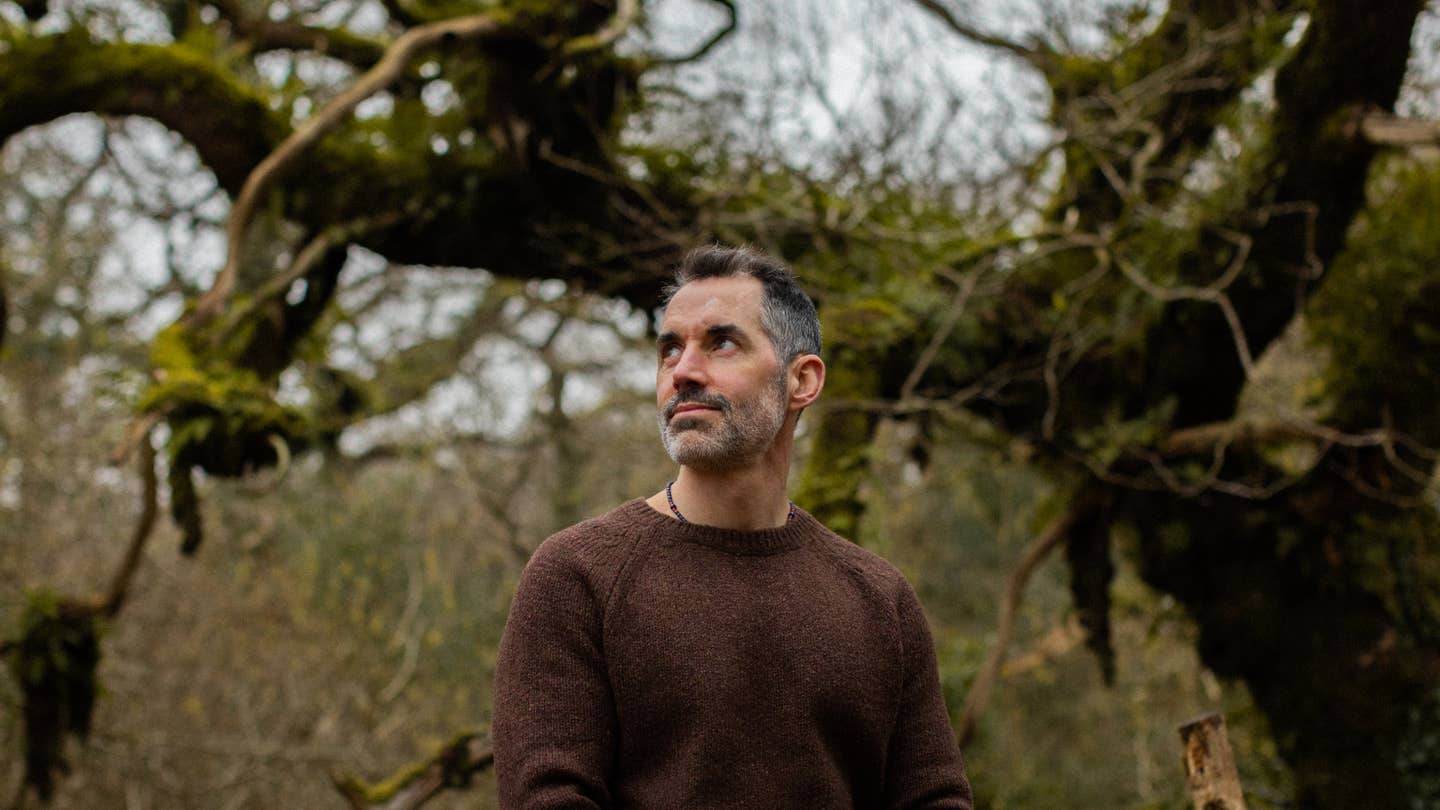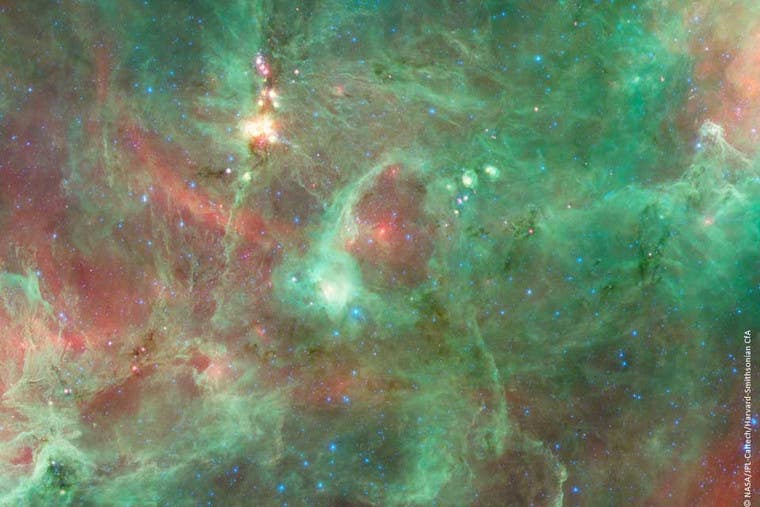Magnetofossil crystals reveal Earth’s first animal navigation system
Scientists uncover ancient magnetic fossils that reveal early animal navigation systems dating back nearly 100 million years.

 Edited By: Joseph Shavit
Edited By: Joseph Shavit

New 3D imaging shows that giant magnetofossils acted as ancient magnetic sensors, offering the earliest evidence of internal navigation in animals. (CREDIT: Wikimedia / CC BY-SA 4.0)
A long time ago, tiny crystals formed in seafloor mud and held onto secrets that would puzzle scientists for decades. These crystals were first spotted in 2008. They looked similar to the magnetic particles made by modern bacteria, but they were far larger and showed up in sediments from many ages and climates. Their clean chemistry and precise shapes made it clear that a living organism had built them, yet no one knew which creature was responsible or what purpose the crystals once served.
These particles, now called giant magnetofossils, came in several forms. One spearhead design drew special attention because of its size. Bacterial magnetic particles tend to measure less than 200 nanometers long, but these fossils reached up to two micrometers. That difference hinted at a much larger builder, most likely a tiny eukaryotic organism rather than a microbe.
Scientists wondered whether these unusually large crystals acted like armor plates for a wormlike creature or served as internal sensors that detected Earth’s magnetic field. The debate continued for years since no one could examine the crystals closely enough to see how they stored magnetism.
A New Window into an Ancient Sensor
That changed when a team studying sediments from the North Atlantic focused on a single spearhead magnetofossil that formed about 56 million years ago during a major warming event. The crystal was too thick for traditional magnetic imaging tools. To overcome this, the researchers used a mix of soft X-rays and a technique called ptychography. It allowed them to record magnetic information from different angles while rotating the particle.
After gathering dozens of images, they used magnetic vector tomography to build a full three dimensional map of how magnetism flowed through the entire crystal. The result revealed a swirling magnetic vortex that curved through the spearhead like a tiny tornado. At its center lay a narrow core where the magnetic direction flipped, a feature linked to a rare magnetic defect known as a Bloch point.
This vortex pattern was not random. It pointed to a structure built to remain stable even when pushed by outside forces. Micromagnetic simulations showed that the vortex likely formed as part of the original fossil and was not a result of later disturbance. These models also showed how a modest magnetic field could trigger the core to flip, matching what the team saw in the sample.
A Compass Hidden in Stone
Once the structure was known, the team calculated the fossil’s magnetic strength. The spearhead had the same magnetic punch as hundreds of smaller magnetite grains combined. It resisted demagnetization even when exposed to fields many times stronger than Earth’s natural field. It also responded to outside magnetic forces far more strongly than magnetite produced by bacteria. In some directions its sensitivity was thousands of times higher.
These properties lined up with what you would expect from a biological compass. When the researchers compared the fossil’s performance to well studied magnetite sensors in trout, the differences were striking. The spearhead could deliver a magnetic energy output more than twenty times greater. A sensor built from such a crystal could detect slight shifts in the angle and strength of Earth’s field with far greater precision. Estimates suggest it could determine direction within about one degree.
The team then modeled 24 different shapes of giant magnetofossils, including needles, bullets, spindles and spearheads. All fell within an energy range that matched what modeling studies predict for strong magnetic sensing. Spearheads tended to fall near the top of the range. The largest spindles reached even higher values. None grew beyond a size where the magnetic pattern would become unstable, which hinted at an evolutionary pressure to maintain clean, reliable magnetic behavior.
A New Look at Ancient Life
Together, the evidence points to a powerful idea. These giant magnetofossils were likely built for magnetic sensing. Their structure and strength seem tuned to reading Earth’s field, much like the internal compasses used today by birds, fish and insects. Instead of tiny bacterial chains that act like straight compass needles, these fossils follow another strategy. They rely on stable vortices that wobble in predictable ways when nudged by slight changes in the magnetic field.
This discovery also helps narrow the search for the creature that made them. It would need to be small but not microscopic, common in ancient oceans and likely able to travel long distances. Some researchers suggest eels as a possible source, since they evolved around the same time and are known to migrate across the Atlantic. Eels can sense magnetic fields, yet the exact tool they use remains hidden inside their tissues.
Sergio Valencia from Helmholtz-Zentrum Berlin and Rich Harrison from the University of Cambridge co led the research, which brought together experts from several countries. As Harrison put it, “Whatever creature made these magnetofossils, we now know it was most likely capable of accurate navigation.”
Practical Implications of the Research
This work offers a window into the early evolution of magnetic sensing in animals. It suggests that complex navigation based on Earth’s field may have begun far earlier than once believed, possibly close to 100 million years ago.
These crystals also preserve magnetic information extremely well, which may help scientists trace the rise of magnetoreception across many branches of life.
The new imaging technique will allow researchers to study other biogenic minerals and may one day help analyze samples brought back from Mars.
Research findings are available online in the journal Communications Earth & Environment.
Related Stories
- Mongolian fossil fills 15-million-year gap in dinosaur behavior and evolution
- Scientists solved the mystery of why flying insects are attracted to light
- Earth’s magnetic field failed 41,000 years ago - forever changing human evolution
Like these kind of feel good stories? Get The Brighter Side of News' newsletter.
Joshua Shavit
Science & Technology Writer and Editor
Joshua Shavit is a Los Angeles-based science and technology writer with a passion for exploring the breakthroughs shaping the future. As a co-founder of The Brighter Side of News, he focuses on positive and transformative advancements in AI, technology, physics, engineering, robotics and space science. Joshua is currently working towards a Bachelor of Science in Business and Industrial Engineering at the University of California, Berkeley. He combines his academic background with a talent for storytelling, making complex scientific discoveries engaging and accessible. His work highlights the innovators behind the ideas, bringing readers closer to the people driving progress.



